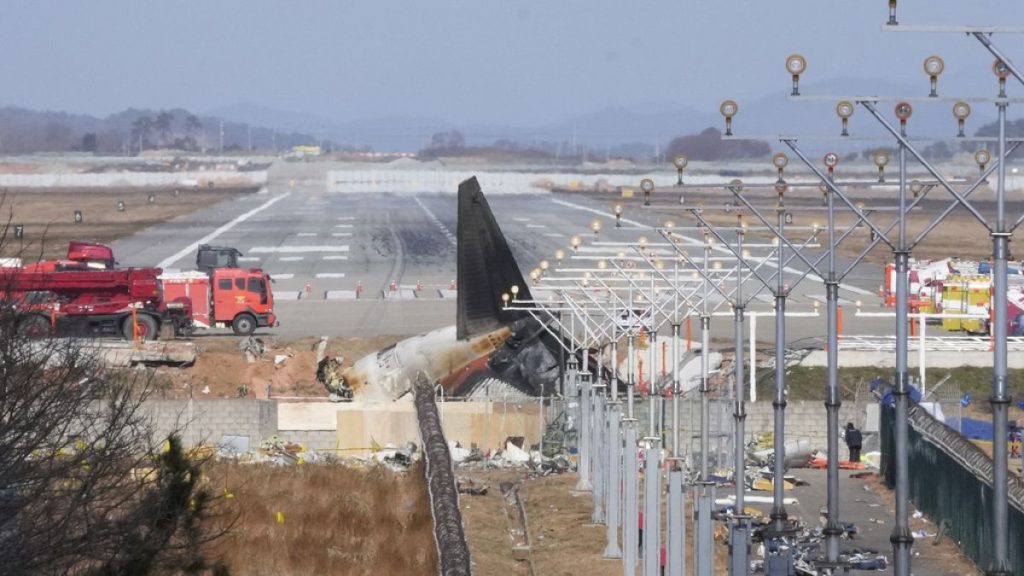The tragic crash of Jeju Air Flight 2216 on Sunday, claiming the lives of 179 people, has prompted a thorough investigation into the circumstances surrounding the disaster. South Korean authorities, determined to uncover the root cause of the accident, have launched a multi-pronged inquiry, including raids on the offices of Jeju Air, the Muan International Airport operator, and the Jeju regional aviation office. These searches aim to gather crucial evidence and documentation related to the airline’s operations, maintenance records, and airport procedures. The investigation also encompasses the examination of the aircraft’s black boxes, which hold vital data regarding the flight’s final moments. Initial findings indicate a complex interplay of factors, including a potential bird strike, landing gear malfunction, and a possible engine problem, all of which contributed to the devastating outcome.
The Boeing 737-800, carrying predominantly South Korean tourists returning from a vacation in Thailand, was approaching Muan International Airport when disaster struck. Videos of the accident depict the aircraft attempting a landing with its landing gear retracted, a critical error that ultimately led to the plane slamming into a barrier at the end of the runway. The impact ignited a fierce fire, engulfing the aircraft and leaving only two flight attendants as survivors. The scene of the crash was a heart-wrenching testament to the sudden and catastrophic nature of the event, with debris scattered across the runway and emergency responders working tirelessly amidst the wreckage. The loss of life has left a profound scar on the nation, plunging South Korea into a period of national mourning.
Investigators are meticulously analyzing the data retrieved from the cockpit voice recorder, one of the two black boxes recovered from the wreckage. This crucial piece of equipment captures conversations and sounds within the cockpit, providing valuable insights into the actions and decisions of the flight crew leading up to the crash. The second black box, the flight data recorder, which stores a wealth of technical information about the aircraft’s performance, sustained damage in the impact and is being sent to the United States for expert analysis. The combined data from both black boxes will be instrumental in reconstructing the sequence of events and identifying any contributing factors to the accident.
The investigation also extends to the airport’s infrastructure, specifically the localizer, a critical navigation aid that guides aircraft during landing. Authorities are evaluating whether the localizer’s construction, particularly the use of concrete for the antenna housing, played a role in the severity of the crash. A lighter material might have yielded more readily upon impact, potentially mitigating the damage to the aircraft. This scrutiny of the airport’s safety features underscores the comprehensive nature of the investigation, leaving no stone unturned in the pursuit of answers and preventative measures for future incidents.
Amidst the ongoing investigation, families and friends of the victims gathered at the crash site on New Year’s Day to mourn their loved ones and pay their respects. The somber gathering served as a poignant reminder of the human cost of the tragedy. The South Korean government has initiated the process of identifying the victims and returning their remains to their families, a difficult but necessary task in the aftermath of such a devastating event. The nation is united in grief, offering condolences and support to those affected by the loss.
The investigation into the Flight 2216 crash is expected to continue for some time, as authorities meticulously piece together the evidence and analyze the complex factors that contributed to the disaster. The findings will not only provide closure for the grieving families but also inform crucial safety recommendations and improvements to prevent similar tragedies in the future. The aviation industry as a whole will learn from this devastating event, reinforcing the importance of rigorous safety protocols, thorough maintenance practices, and vigilant oversight to ensure the safety and well-being of all passengers.














